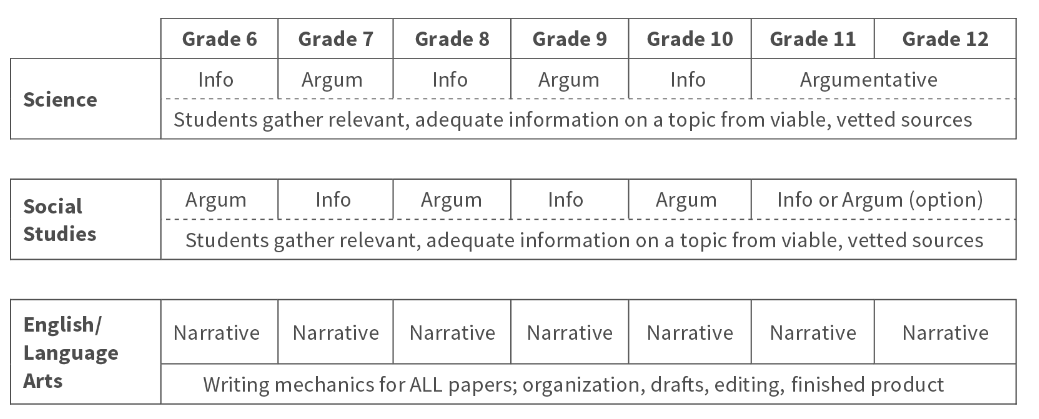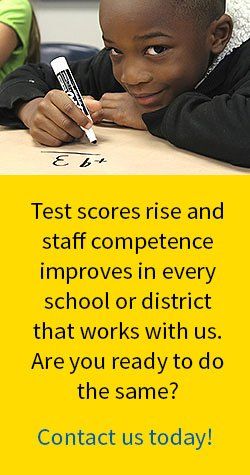The EdFOCUS Approach to Literacy, K-12
At grades K-5, EdFOCUS helps districts highlight the ELA standards aligned to the Literacy standards in grades 6-12. The process includes “unpacking” these standards to see what students are expected to do. Additionally, what teaching strategies best facilitate mastery. Consultants help K-5 teachers locate on-level supplemental materials related to Science and Social Studies standards. By learning to analyze these on-level texts, K-5 students acquire basic Literacy skills as a foundation for the upper grades.
At grades 6-12, EdFOCUS works with content teachers at each grade level to “unpack” the Literacy standards. As with grades K-5, these 6-12 teachers identify the specific student behaviors that indicate mastery and what teaching strategies and materials best facilitate that mastery. Once the “unpacking” is complete, the teachers integrate Literacy standards into their Science, Social Studies, and Math Units as appropriate.
The Research Papers. The Literacy standards include research projects in Science, Social Studies, and technical subjects such as Math in grades 6-12. Since the ELA standards also require research papers, students in all four core courses require Informational and Argumentative research projects. It is a silly waste of time and resources for students to attempt 3 or 4 research papers every year, each on a separate topic. Instead, the subject are teachers should collaborate on the topics as well as time of year to complete these requirements. Here is a sample schedule for this collaboration:

EdFOCUS helps teachers examine each other’s Curriculum Maps to decide the best timeframes for each paper, given the content. The “division of labor” would be that the content teachers help students decide the research question, identify the sources, harvest the information from the sources, and prepare the overall “outline” for the paper. The ELA teachers then help students refine their data, more fully organize the paper, and apply the art of style, format, and mechanics to most effectively communicate the message.
The Reading Lists. EdFOCUS helps the district examine its fiction and non-fiction reading lists in grades 6-12. Typically, these lists are loaded heavily with Fiction. Also typical is the lack of coordination among the content areas, often even within the grade levels in the same subject.
EdFOCUS helps the Science, Social Studies, and Math departments select the kinds of authentic informational text that best aligns with each content Unit as well as the Literacy standards assigned to that Unit. The ELA department is included in this discussion, as they re-examine their traditional
reading lists. They, too, select non-fiction texts that complement the subject areas. Naturally, they also select non-fiction that complements their ELA Units as well. Most importantly, the ELA program in grades 6-12 adjusts the proportion of fiction and informational text to the 30-40% fiction and 60-70% informational text as set forth in the Common Core–and as supported by the Literacy research.
Close Your School’s Student Mastery Gap
Take the Self-Assessment
- All Ohio school districts are required to provide instruction so students can pass the Ohio State Tests (OST).
- When students fail to pass the OST tests, it reflects negatively on the school and the district as a whole.
Schedule a Consultation
- The EdFOCUS materials are written exclusively to the Ohio Standards and address the underlying level of thinking required for mastery.
- EdFOCUS materials are directly connected to the standards.
Improve Outcomes
- Classroom instruction is made more effective.
- District OST scores reflect mastery of content standards which generates public support and increases the state ranking.
Test scores rise and staff competence improves in every school or district that works with EdFOCUS.
Is your district ready to improve?
Contact Us
Is your school or district ready to improve student achievement?
Contact the EdFOCUS team today at (330) 842-0742.
©2023 EdFOCUS Initiative | Site Map | Privacy Policy | Accessibility

